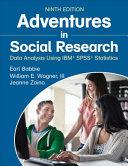The study of media effects is one of the most central to the discipline of communication and encompasses a vast array of theoretical perspectives, methodological tools, and application to important social contexts. In light of this importance - as well as the rapid changes in the media environment that have occurred during the past 20 years - this Handbook of media effects theorizing and research explores where media effects research has been over the past several decades, and, equally important, where it would be most fruitful to go in the years ahead. In addition to providing a comprehensive framework for those interested in media effects, the Handbook also emphasizes the changing nature of the media landscape. Thus, new technologies not only provide new venues for research, but they also represent challenges to many existing media effects theories (that were formulated prior to the widespread adoption of the Internet). The contemporary diversity of the field and its research is seen in chapters addressing sociological, cultural, and organizational approaches and in chapters on specific approaches, domains, and context-related effects. Throughout the Handbook and within each chapter, authors address the following issues: (1) historical context on theory development/area of study; (2) theory explication and theoretical developments through to the present; (3) typical method of study/research approach/moderators; (4) conceptualization of the audience; (5) the impact of new media environments; (6) criticismsntroversies; and (7) directions for future research. Section I: Begins with an overview of the field, conceptualization of media effects, and the editors' goals for the volume and then focuses on the range of methodologies (both quantitative and qualitative methods) used in the study of media effects. Section II: Focuses on dominant theoretical approaches in the media effects area from a more societal perspective. Included here are some of the most dominant theoretical perspectives in the media effects realm (i.e., cultivation, agenda setting, framing) that relate to broad-reaching effects of both entertainment and news programming. The section then focuses on related theories that, though less developed, have received significant attention in the literature. To expand the horizon of this Handbook, a chapter on Cultural Studies in included to engage more qualitative views of media's societal effects. Section III: Focuses on issues of message selection and processing that are central to the mass media literature. These chapters cut across application contexts. For examples, the emotion chapter touches on entertainment, persuasion, and children's media; the Social Influence/Environmental Aspects chapter includes issues of co-viewing in families, among peers, etc. Section IV: Refelcts a dominant trend in media effects literature - that related to persuasion and learning - and traces its theoretical perspectives (including major theories of persuasion and especially social cognitive theory) through the various contexts in which media have such effects, such as health, advertising, media literacy, and the like. Section V: Explores the contexts and audiences that have been traditional foci of media effects research - violence, children, body image, video games, sports, etc. In each chapter authors address the theories most applicable to those contexts, further expaning the theoretical offerings of this Handbook. The focus on how this sort of research is typically conducted methodologically and how it will need to change in light of new technologies and media advances make these chapters unique. Section VI: Expands on existing work by focusing on a concern central and unique to the communication discipline - message medium - and how it influences effects ranging from what messages are attended to (e.g., formal features), how we spend our time (e.g., displacement effects), and even how we think (e.g., medium theory).
In light of this importance - as well as the rapid changes in the media environment that have occurred during the past 20 years - this Handbook of media effects theorizing and research explores where media effects research has been over the ...










